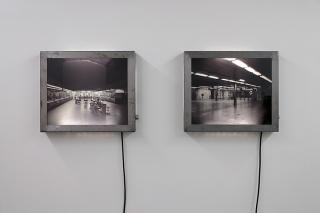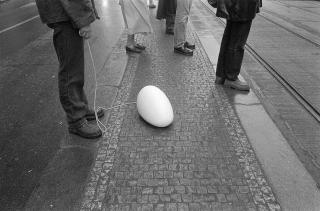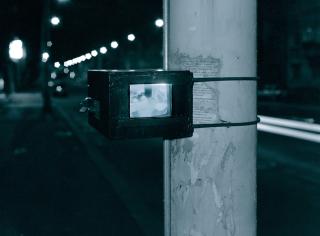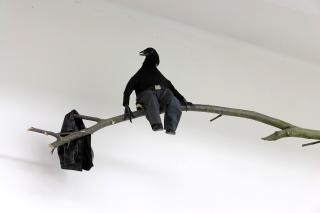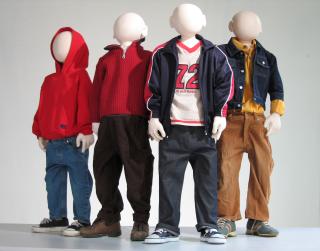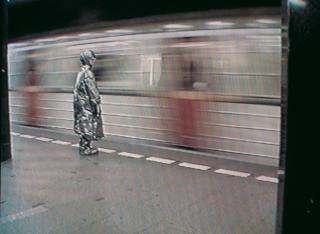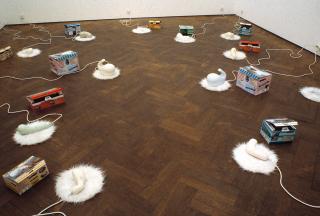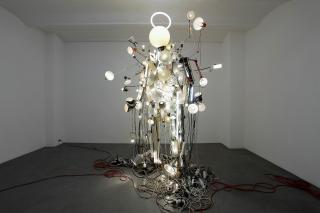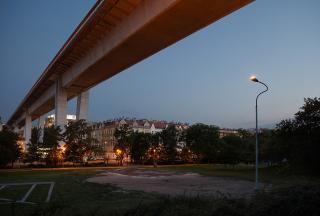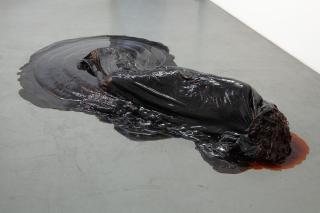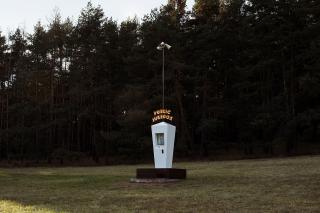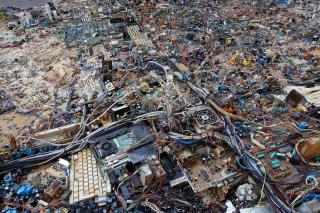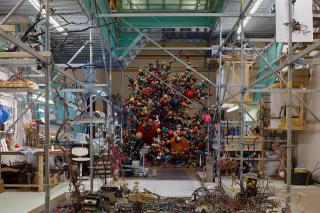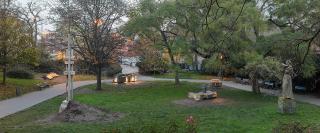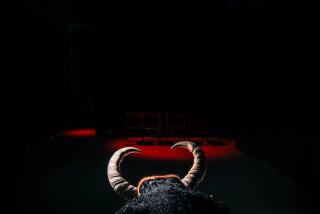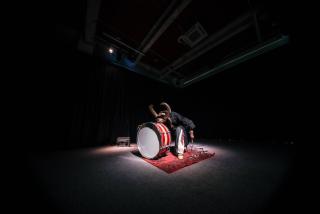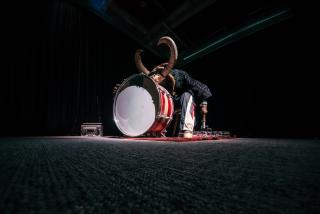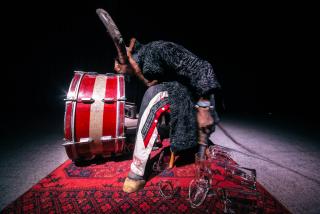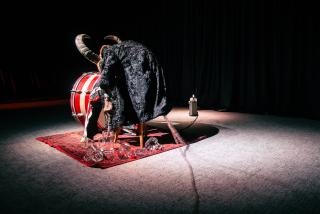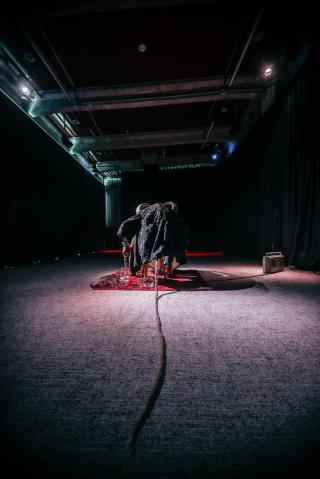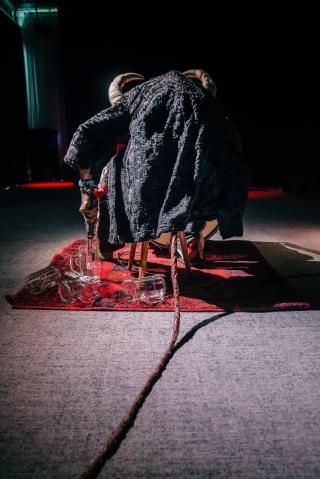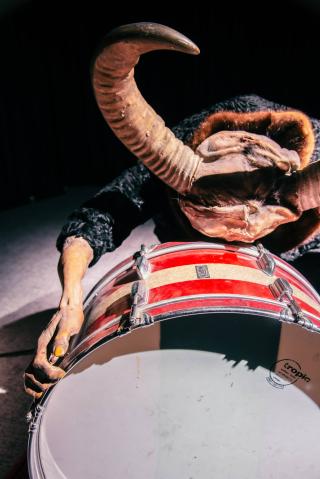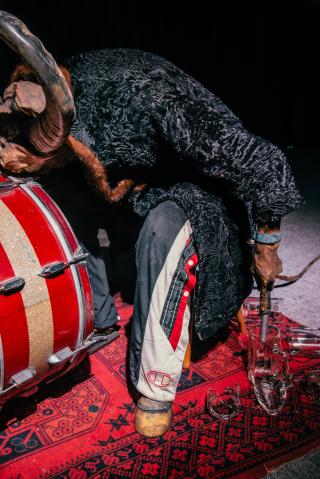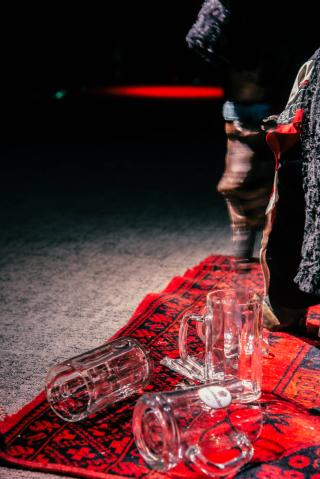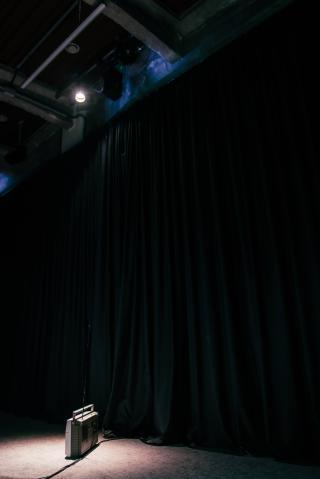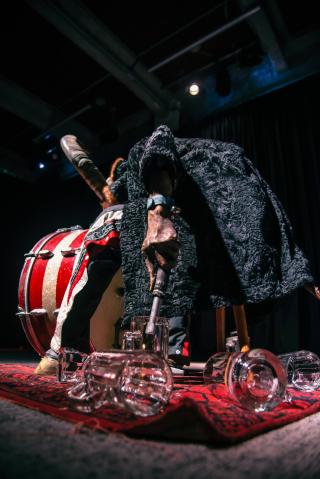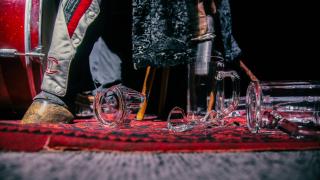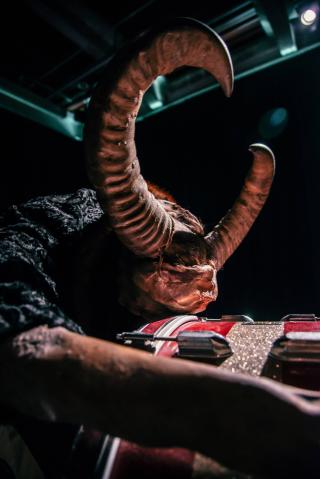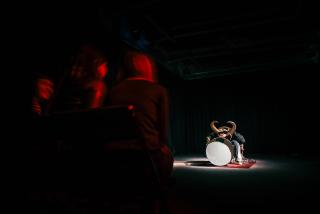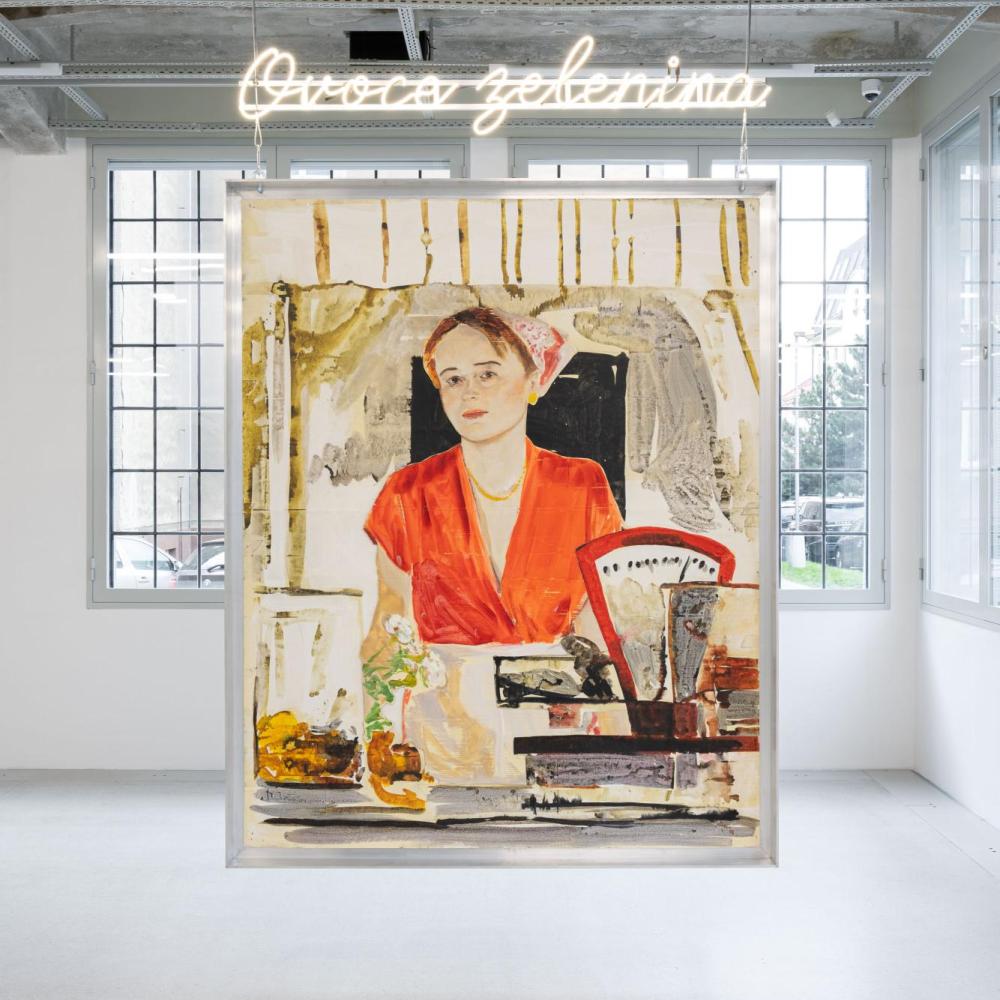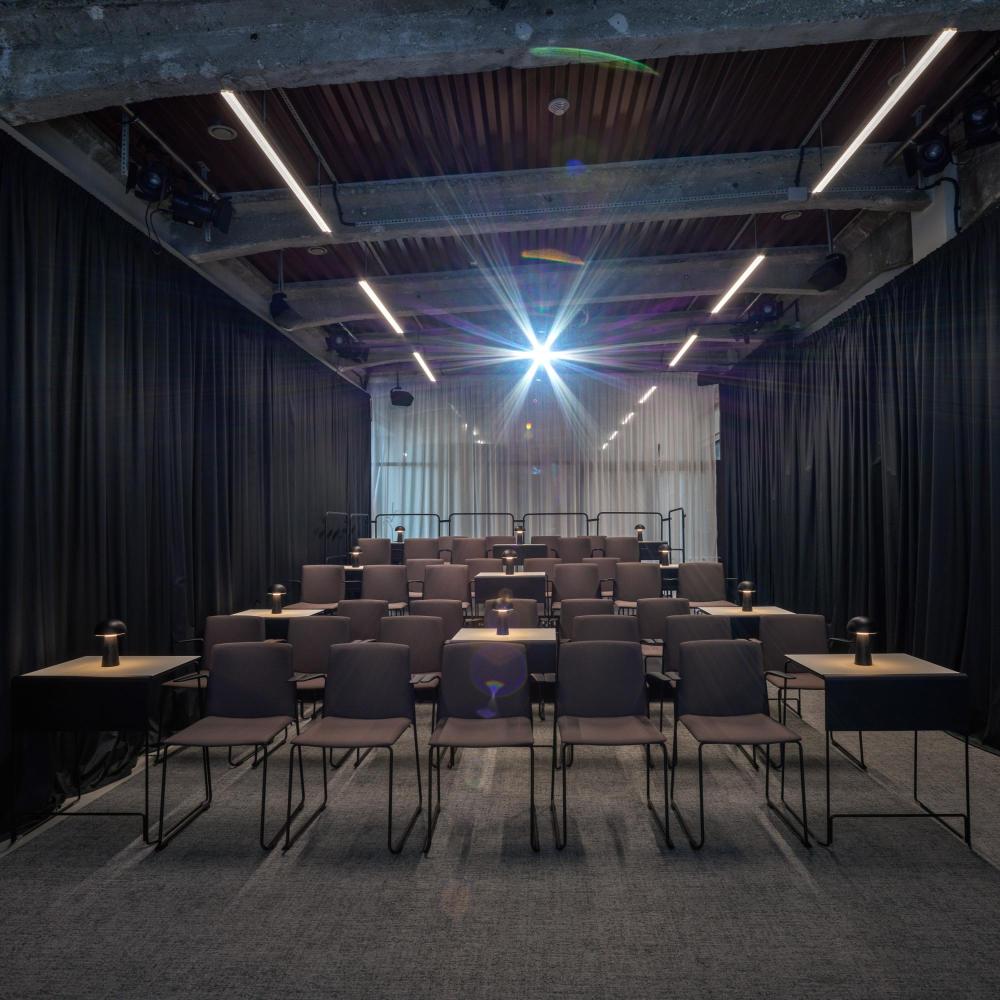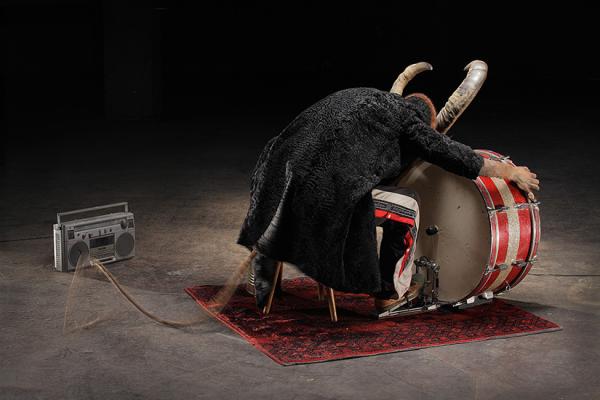
From April 26 to May 2, the Telegraph Cinema is hosting one
of sculptor Krištof Kintera's distinctive works, Bad News, which is part of the Robert Runták Collection. On this occasion, we will try to give you a closer look at the work of one of the most active and best-selling contemporary Czech artists.
The scope of Kintera's artistic expression is much broader than being able to label him only as a sculptor. In fact, he uses a variety of approaches and styles to create his postmodern objects, but above all materials that refer to the time in which we live. He works with waste materials, with everyday objects, but also with audio and video recordings or different types of lighting. He studied at the Academy of Fine Arts in Prague in studios of Jiří Lindovský, Aleš Veselý, Michael Bielický and Milan Knížák. Then he did postgraduate studies at the Rijksakademie van beeldende kunsten in Amsterdam. He was nominated for the Jindřich Chalupecký Prize three times.
Kintera's early work is witty and sarcastic. The social sphere of life was important to him and he was interested in the interconnection of opposing spaces - personal and social, inner and outer, empty and filled. He reflected this in About us without us (1996), when he installed a sound recording in the empty space of the metro at Náměstí Míru in Prague, which he in turn made when it was in full operation. The empty space thus gave the impression of being populated, even though no one was present. He did the same with the hall space in the main post office building in Prague. At this time, he also dealt with the question of the gallery as a place that is a kind of temple for works of art, where we go to be in contact with art. He wondered what would happen if he took art out of the gallery, on the other hand. And so the work It (1996) was created, a small oval object resembling an egg, moving on small wheels attached from below. All Kintera had to do was attach a leash and start moving the "egg" around the public space. Their final stop was the exhibition in the gallery where they had originally started. He dealt with social issues in Live Broadcast (1998), where he broke down the boundaries between the personal and the social. He installed a screen on a street lamp where he lived, on which a passer-by could see a live broadcast of Kintera's life for a month.
Typical are also mechanical talking puppets, such as the talking raven I see, I see, I see (2009), preaching about morality, or the series of Talkmen dolls (1999-2003), resembling children in height. One of the dolls was on view in the Signal II exhibition at the Telegraph Gallery. The puppets pose various questions, but they always encounter ecological or ethical issues. Kintera has lent his computerised voice to the expressionless, anonymous faces. The installation Plumbuma, i.e. Plumbař was also created between 1995 and 1998.
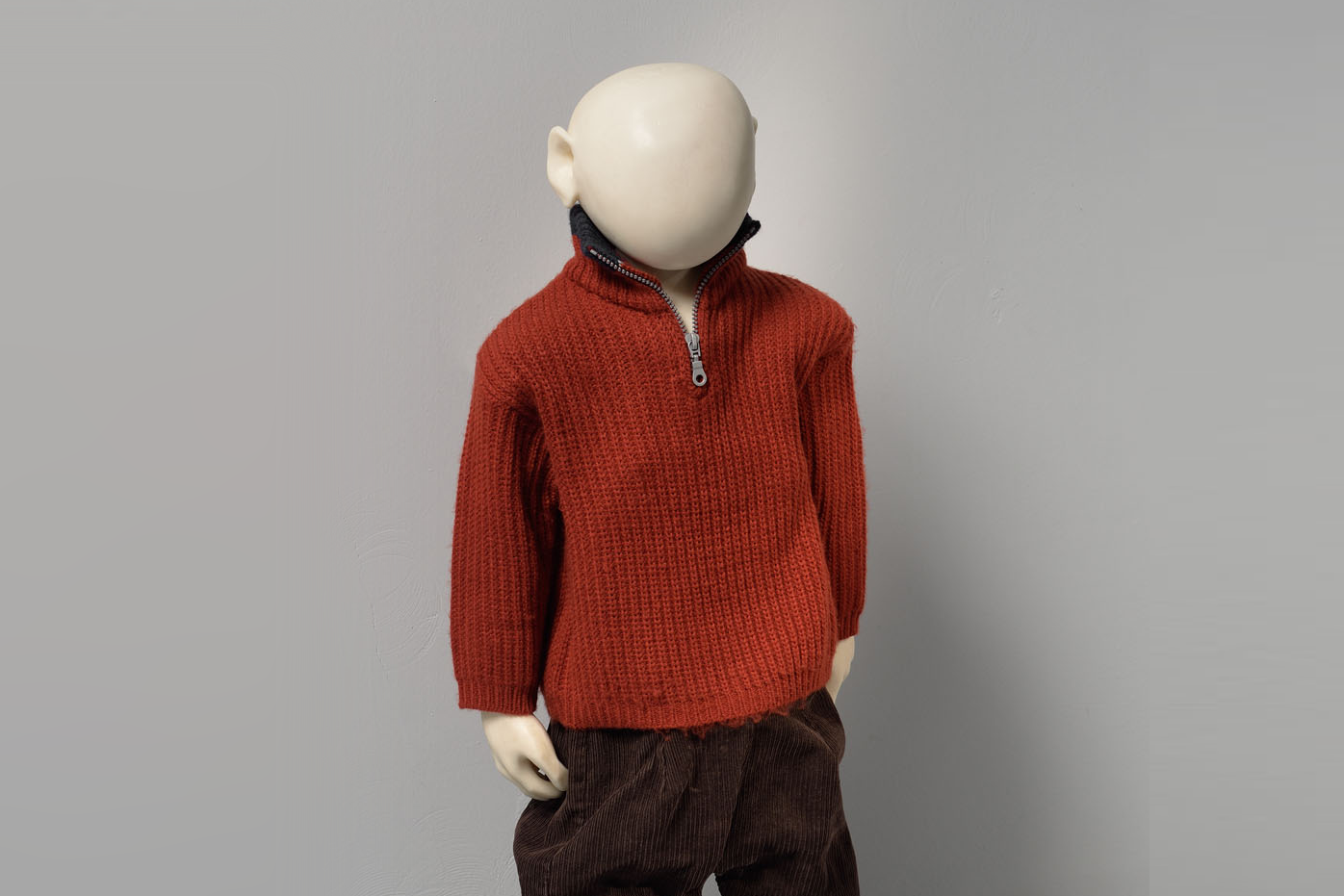
In the late 1990s, he became more interested in environmental and existential issues - commerce, consumerism, human consumption of energy and how we treat it. He started to use mainly plastic everyday objects, rubbish, electrical appliances, balls, lamps. He then connects these objects with, for example, magnets, lights, fans, and these take on new dimensions. In Appliances (1997-98) he produced twenty-seven models of household appliances used for nothing. The idea was to make them look good and designer, be expensive and use electricity. He then placed these objects in a shop and wondered how many people would buy such a product. He further demonstrated the waste of electricity in My Light Is Your Life (2009), a monumental figure made of domestic lamps. When plugged in, it consumes a huge amount of electricity, and it is completely unnecessary. Another light work Of One's Own Volition -Memento Mori (2009-11) was created under the Nusel Bridge as a reminder of those who decided to end their lives there. A simple street lamp that does not illuminate the space below, but instead looks up to the sky and points at the bridge. He depicted environmental themes and a strong ecological mindset in All My Bad Thoughts (2009). He created a figure lying on its side, drowning in a pool of oil that gradually dissolves. In doing so, he points to the fossil fuels that were created by the destruction and extinction of living organisms.
In 2011, he returned to the moving puppet and made that work Bad News. We chose to exhibit this work precisely because of its frightening timeliness. The devil plays a drum and listens to a depressing avalanche of news from the radio about disasters happening in the world. As in the 1990s, so in the early 21st century, his work has a place in public space. He created the work One Euro Public Jukebox (2013) from a grandstand or pulpit on the site of the original Gottwald Memorial. This allowed the visitor to choose a soundtrack that filled the entire square. After that, the jukebox permanently settled in a meadow near the village of Hrachov near Sedlčany, where it no longer has such contact with the public.
In 2017, Kintera's work took on large proportions - he created Postnaturalia, an installation twenty-five metres long and twelve metres wide. This was made up of cables from appliances, resembling a root system in nature, giving rise to several species of pseudo flowers. The exhibition at the Rudolfinum in Prague in 2017, entitled Nervous Trees, was also a huge success. It was the 100th anniversary exhibition for the Rudolfinum Gallery since its founding, and Kintera prepared an impressive interactive exhibition that attracted more than 160,000 visitors over the course of its run, the largest number of viewers ever to see an exhibition by a living Czech artist. In it, Kintera worked with his typical waste material or with components of electronic devices, which are the counterpart of living nature. The latter was also highlighted by the construction of an artificial landscape in one of the rooms. Artificial flowers and a floor covered with parts of all kinds of machines created an impressive and contradictory spectacle. Visitors were also captivated by a pyramid made of used washing machines, which dominated one of the historic halls of the Rudolfinum and drew attention to the oppressive consumerist way of life that our society lives.
In the spring of 2022, one of Kintera's most famous works, the aforementioned Plumbuman, then Plumbar, made quite a splash in art circles. The allegory of a communication-overloaded world, which is in the Robert Runták Collection, was to be loaned to the Prague City Gallery's Heroin Crystal exhibition. This exhibition sought to create a more comprehensive picture of the artistic direction of the busy 1990s in the Czech Republic. However, the director of the institution, Magdalena Juříková, rejected the work, given the career of the owner of the work, who holds the position of director of the executor's office in Přerov. The Prague City Gallery thus made its position known. However, one may wonder whether this action does not lead to damage to the artist himself or whether the work in question does not play such a fundamental role in the development of art that its absence from the exhibition represents a disruption of the entire line. Kintera himself expressed regret that the work could not be exhibited, despite the fact that at least his kinetic sculptures for children, asking disturbing questions, the aforementioned Talkmen, were headed to the exhibition.
In February 2022, Kunsthalle Prague opened with the exhibition Kineticism, which Kintera followed up in November of that year by planting seven concrete miniatures of Prague buildings from the second half of the last century, many of which had succumbed to demolition, in an attempt to erase the past of the Communist regime with them in the park opposite the building. Kintera breathed new life into these objects, transforming them into brutalist sculptures of houses, made of concrete slabs that were subsequently destroyed - a reminder of the impermanence of human affection. In different scales and lighting, they correspond to the original sculpture of a girl with a dove by Václav Šimek, which has stood in the park since 1958. In this utopian town we can see, for example, the Hotel Praha or the Central Telecommunications Building in Žižkov.
Kristof Kintera's latest exhibition is currently on view at Prague's DOX Contemporary Art Centre, where it will be on view until 20 August. The exhibition, titled How can I help you? brings back several positions of Kintera's work. One of the parts is almost 400 three-dimensional drawings, as the artist calls them. It is not a classical drawing, but a kind of collage of everyday objects connected with text on a white background, through which he communicates to the world his thoughts about the world we live in. The second part is an installation, which Kintera himself called an apothecary. He encloses feelings and emotions that each of us may experience on a daily basis in all kinds of jars, bottles, barrels or containers from industrial chemicals. This makes it very easy for the visitor to identify with the ones that are relevant to them.
